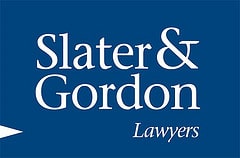Posted by Neil Rose, Editor, Legal Futures
Let’s get the cricket joke out of the way first. Heard about the new website on Australian cricket? It’s called Wicketleaks.
Some weeks ago accountants Baker Tilly put on a seminar addressed by Andrew Grech, managing director of Australian firm Slater & Gordon, famous (relatively speaking, at least) for being the world’s first publicly listed law firm.
Though I reported on Mr Grech’s unique perspective (the other listed legal business in Australia is a consolidator), I have not until now had time to blog about it. So here are a few thoughts:
Before we all get too excited by the thought of law firms floating next year (and I’m as bad as the next hack – I would donate a non-essential organ in return for breaking the story of the first firm here to do it), it took Slater & Gordon seven years from starting to look at its options to reach the point of listing. That doesn’t mean every firm would take so long, but it does indicate how deeply firms need to examine it. Has anyone being doing that for nearly enough time to allow them to push the button in the next year? Just the idea seemed pretty far-fetched when the Legal Services Act came into force on 30 October 2007.
As everyone scouts around for likely candidates for going public, it may be instructive to note that Slater & Gordon started life as a trade union firm some decades ago before gradually expanding beyond its personal injury roots into other areas of private client and then commercial work. If there is any law firm over here to match that description, it is Russell Jones & Walker. I wouldn’t pretend to know their strategy (even though they are a Legal Futures Associate), but it is no secret that they have been one of the more progressive practices in terms of looking at what opportunities alternative business structures may hold for them.
Slater & Gordon “danced” with private equity but concluded that all roads lead to an initial public offering anyway and decided to cut out the middle bit. Herein lies the rub of private equity investment – the exit. Ideally you want to find an investor genuinely in it for the long haul. While they do exist (Canada’s AGF has held a 30% stake in accountants Smith & Williamson for some years now), most are going to want an out sooner or later. There are other options, such as a trade sale, but firms could then find themselves in a place they don’t want to be.
There are a couple of other aspects of flotation worth mentioning – firms do not need to float in their entirety (how about putting 25% of the business on AIM?) and it need not just be for the big boys. Glasgow-based intellectual property business Murgitroyd & Company recorded a turnover of £7.75m (with £391,000 profits) before it floated on AIM in 2001; the international expansion enabled by listing has seen it grow to a £29m turnover (£4m profits) by 2010.
They may speak the same language as us (kind of), have the same head of state, and practise law in a similar way, but the Australian legal market is not the same as England and Wales. It is remarkably fragmented, with 11,000 legal businesses, many of them so-called “mom and pop” practices. That’s more than we have here, serving a population a third of the size. Without knowing for sure, I suspect there are more ‘big’ players in the personal injury market here than in Australia.
But what struck me more than anything was the glossy video of the firm’s history that Mr Grech played before his presentation. It featured a brief cut-away of the firm’s headquarters, a large office block with an enormous “Slater & Gordon” sign standing proudly on top. The firm has recognition on the street of which UK practices could only dream. Now that is something to aspire to.














From Neil Rose, Editor, Legal Futures
I received this message from David Marshall of Anthony Gold via LinkedIn:
One other point about Slater Gordon’s model is that they brought contingent work in progress fully onto their balance sheet.This is essential to give investors something tangible for their money, but would lead to a big tax and (perhaps more importantly) cash call. But a corporate model might be able to cope with this more easily. Also even prior to the float their name recognition on the street was extraordinary (think Thompsons plus Leigh Day and then some).